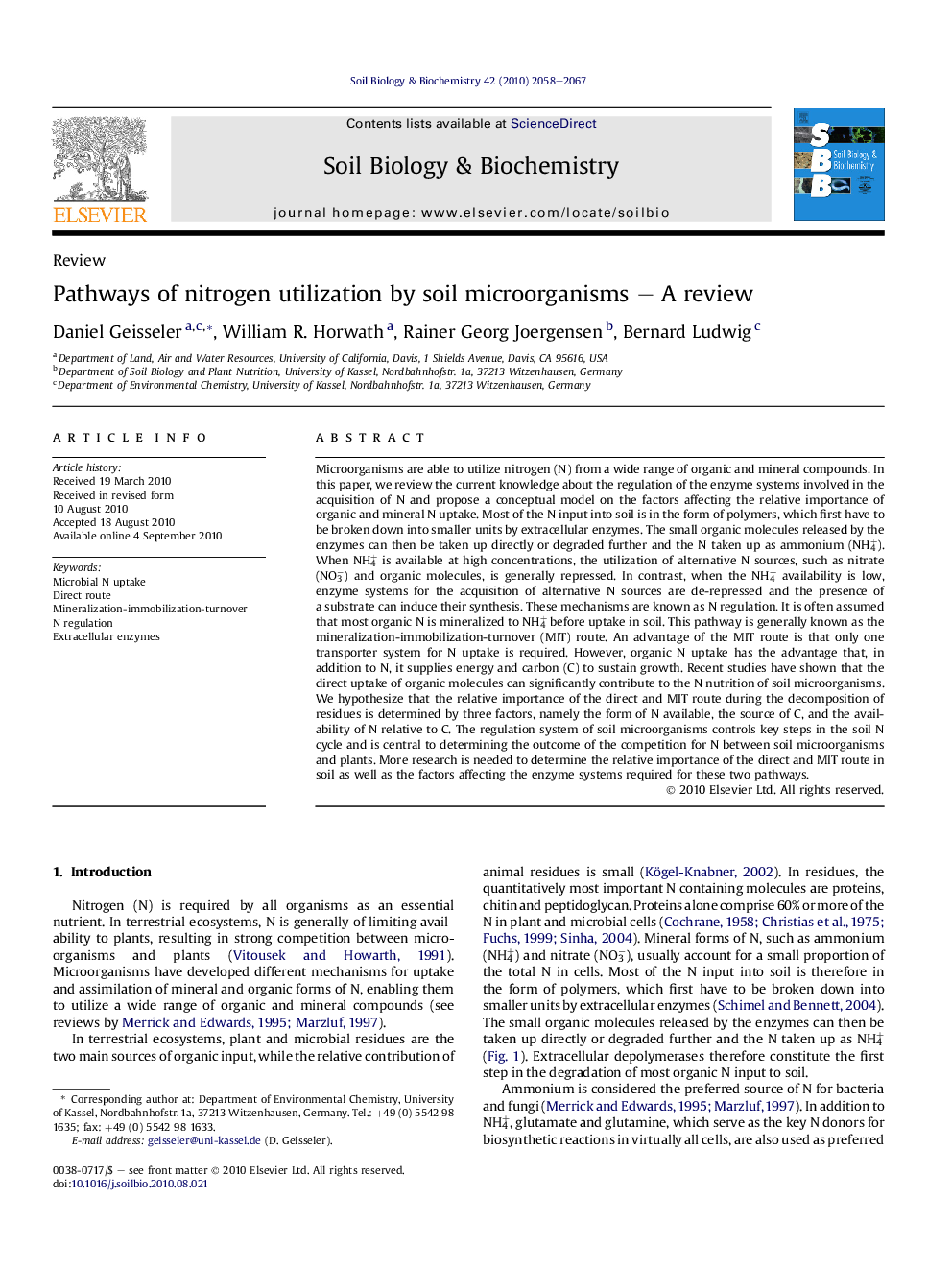| کد مقاله | کد نشریه | سال انتشار | مقاله انگلیسی | نسخه تمام متن |
|---|---|---|---|---|
| 2025358 | 1069993 | 2010 | 10 صفحه PDF | دانلود رایگان |

Microorganisms are able to utilize nitrogen (N) from a wide range of organic and mineral compounds. In this paper, we review the current knowledge about the regulation of the enzyme systems involved in the acquisition of N and propose a conceptual model on the factors affecting the relative importance of organic and mineral N uptake. Most of the N input into soil is in the form of polymers, which first have to be broken down into smaller units by extracellular enzymes. The small organic molecules released by the enzymes can then be taken up directly or degraded further and the N taken up as ammonium (NH4+). When NH4+ is available at high concentrations, the utilization of alternative N sources, such as nitrate (NO3−) and organic molecules, is generally repressed. In contrast, when the NH4+ availability is low, enzyme systems for the acquisition of alternative N sources are de-repressed and the presence of a substrate can induce their synthesis. These mechanisms are known as N regulation. It is often assumed that most organic N is mineralized to NH4+ before uptake in soil. This pathway is generally known as the mineralization-immobilization-turnover (MIT) route. An advantage of the MIT route is that only one transporter system for N uptake is required. However, organic N uptake has the advantage that, in addition to N, it supplies energy and carbon (C) to sustain growth. Recent studies have shown that the direct uptake of organic molecules can significantly contribute to the N nutrition of soil microorganisms. We hypothesize that the relative importance of the direct and MIT route during the decomposition of residues is determined by three factors, namely the form of N available, the source of C, and the availability of N relative to C. The regulation system of soil microorganisms controls key steps in the soil N cycle and is central to determining the outcome of the competition for N between soil microorganisms and plants. More research is needed to determine the relative importance of the direct and MIT route in soil as well as the factors affecting the enzyme systems required for these two pathways.
Journal: Soil Biology and Biochemistry - Volume 42, Issue 12, December 2010, Pages 2058–2067